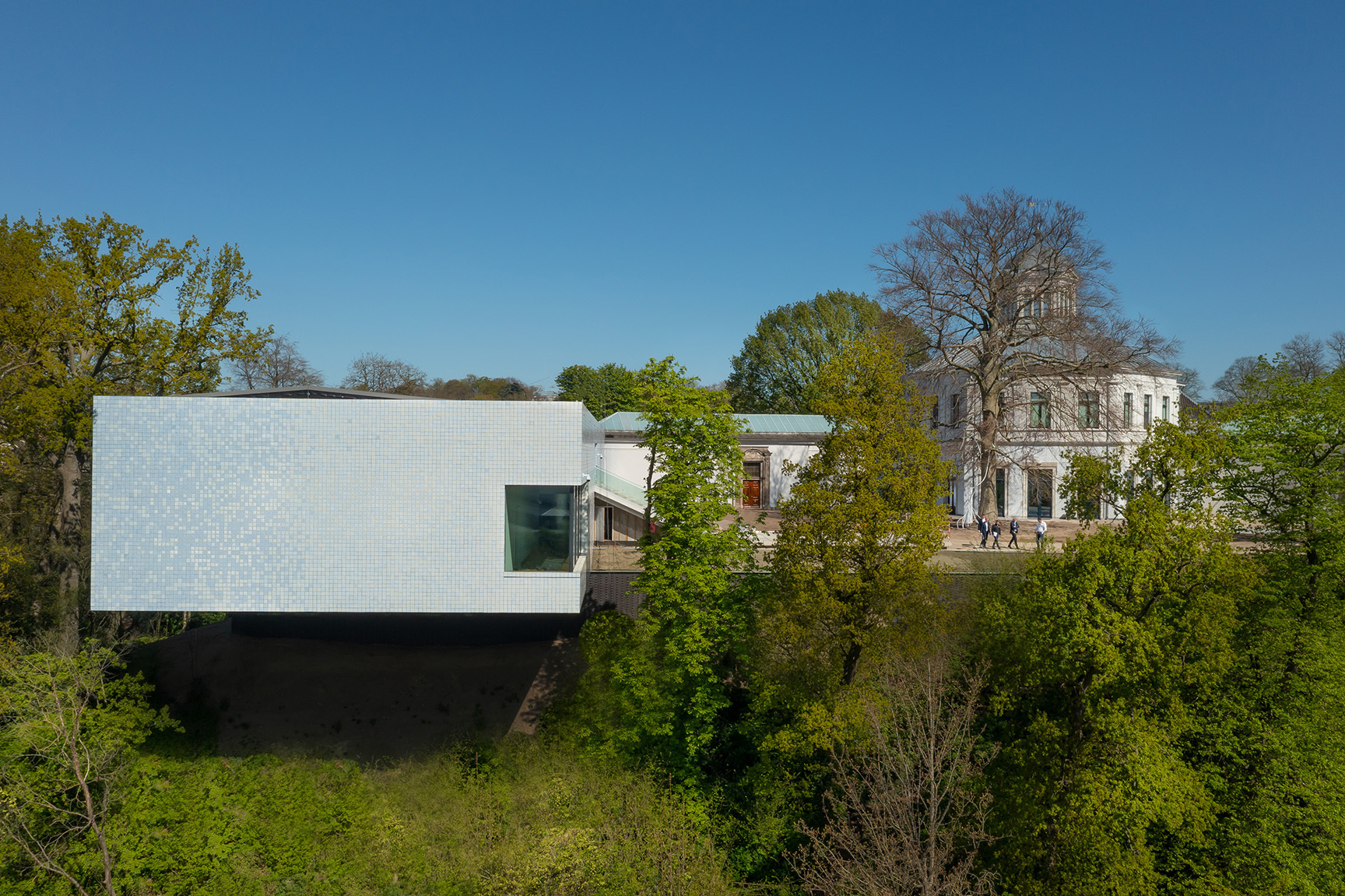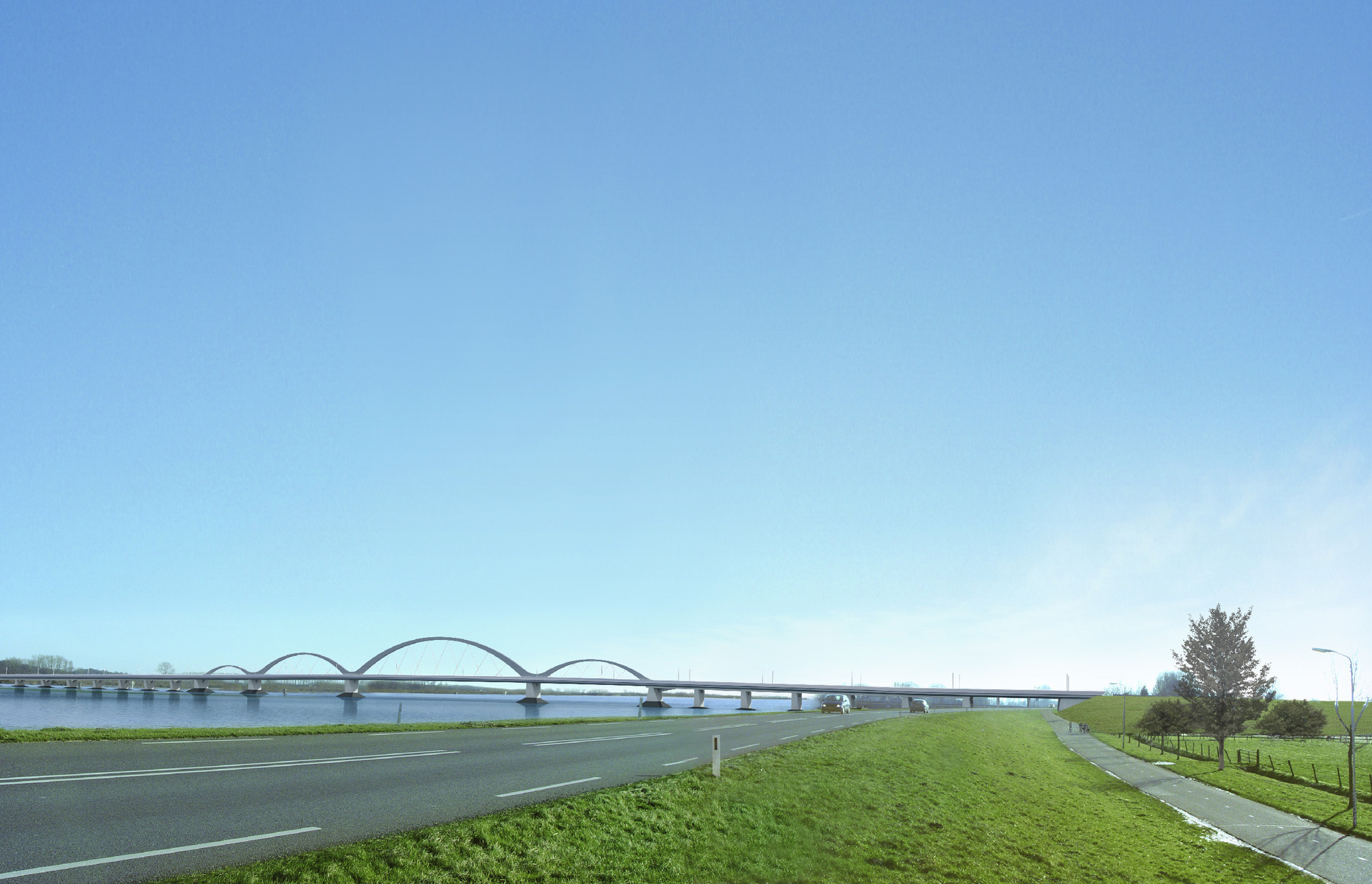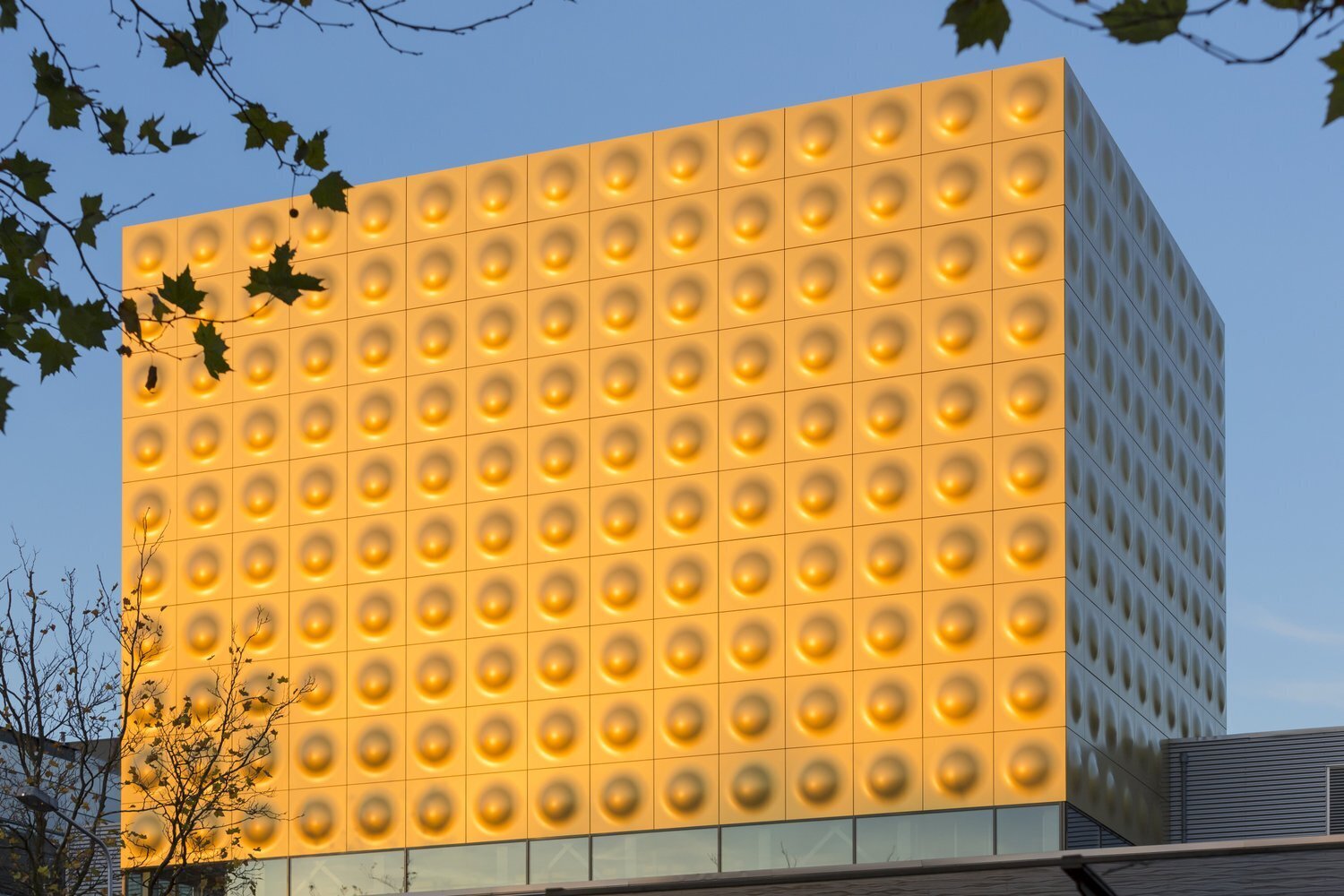Brug Temse
The ‘Tweede Scheldebrug’ connects the banks of Bornem and Temse and is located upstream from the existing bridge ‘Scheldebrug’. The design provides a modern solution for traffic flow on the N16, where an elegant arch construction with movable section ensures both road traffic flow and waterway passage for shipping.
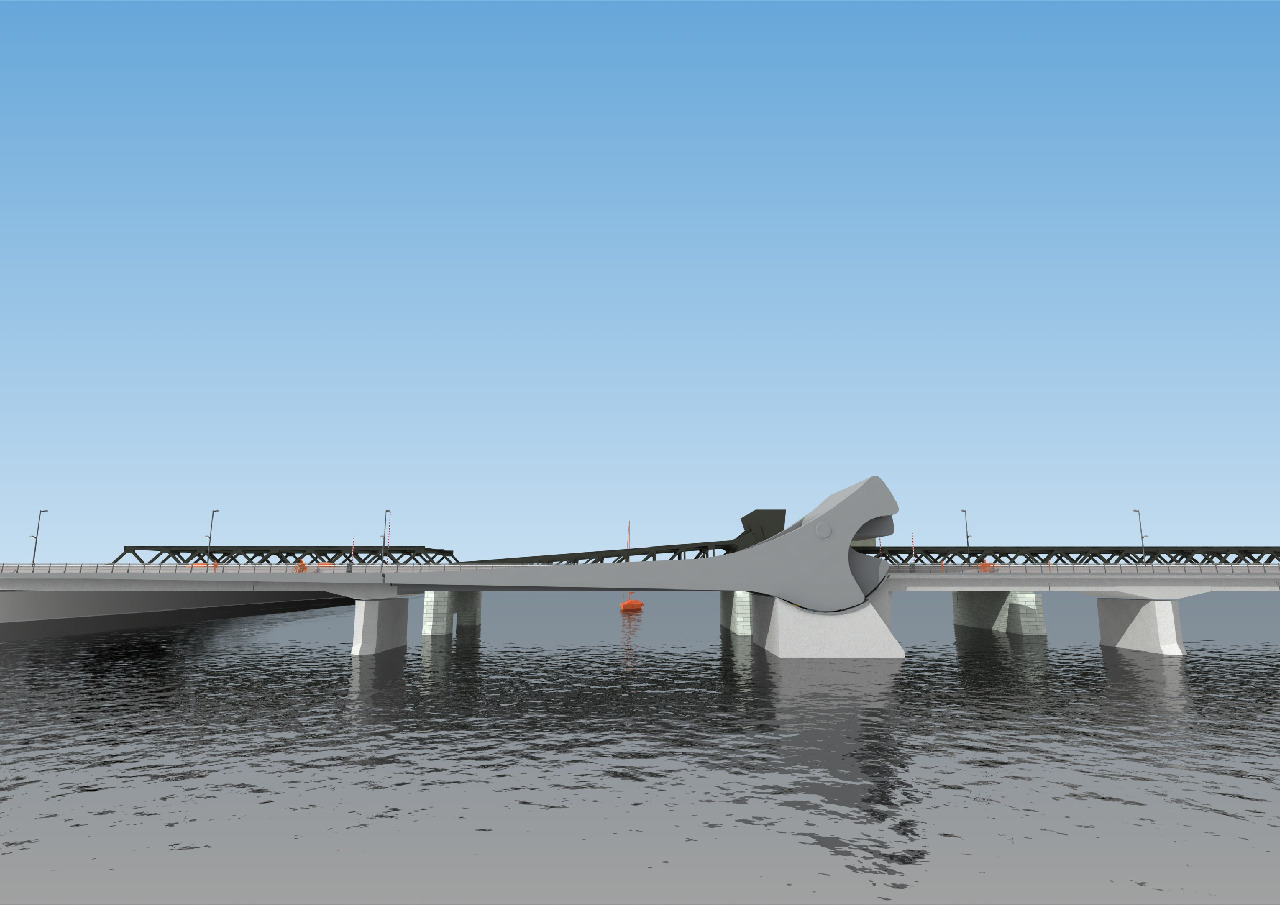
Urban Integration
The realization of the new bridge will improve traffic flow on the N16, while cyclists receive a comfortable and safe connection. Pedestrians gain more space on the existing bridge due to the removal of bicycle traffic. The bridge's significance for the environment can be divided into three urban planning themes: the bridge as a connecting element that spans the Schelde in one simple movement, the bridge as a space-creating element with open and light spaces under the construction, and the bridge as an artifact that has its own identity alongside the characteristic existing bridge through its slender design.
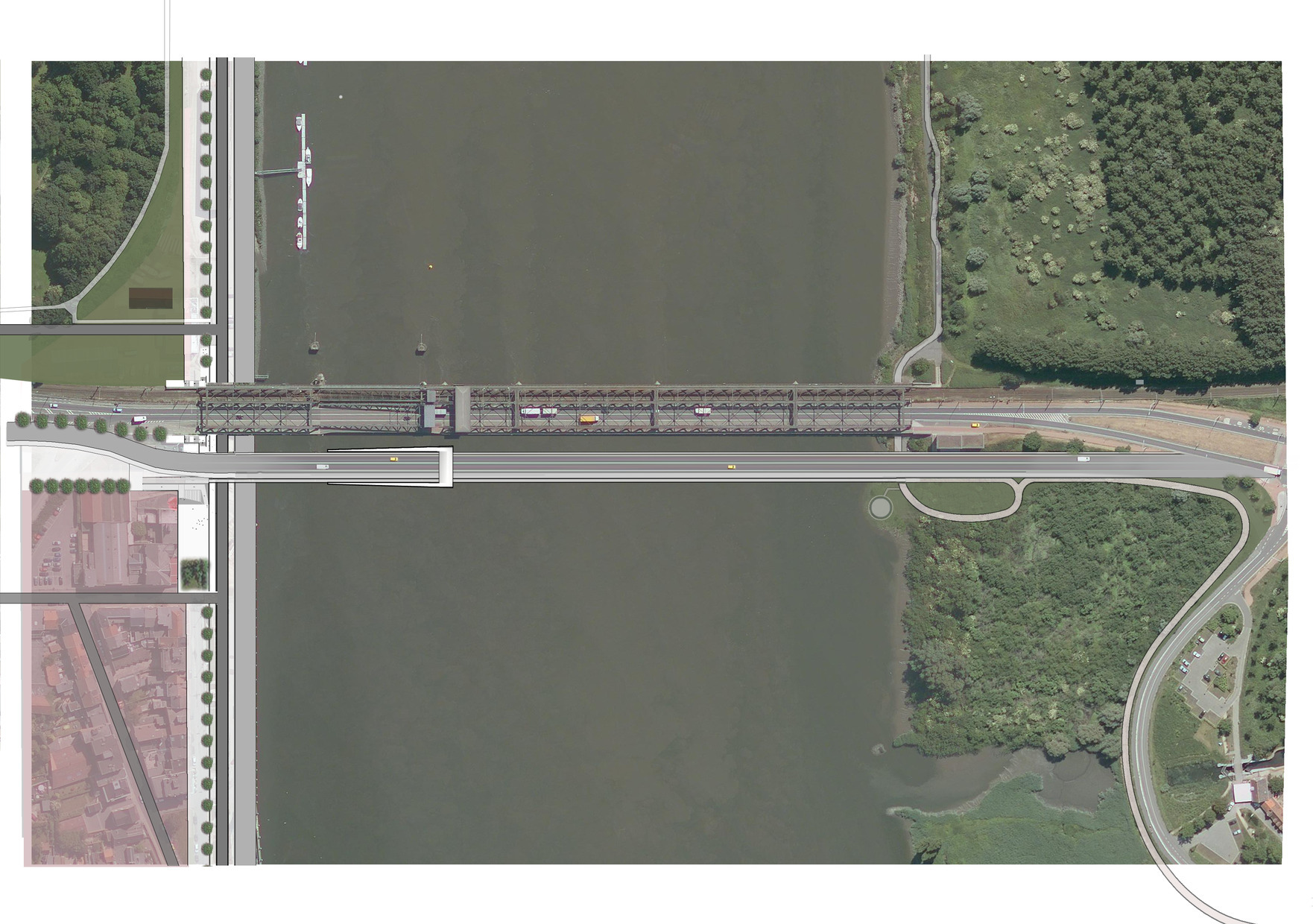
Fixed yet Movable
The fixed bridge section consists of concrete box girders resting on concrete hammer pieces, supported by groups of tubular piles. Through prefab edges on both sides, the bridge tapers toward the edges to form a slender, continuous line. The steel balustrade with UNP profiles emphasizes the horizontal line, while lighting in the railing illuminates the cycle path and provides orientation.
The movable bridge section forms a compact system with the counterweight placed above the roadway. This rotates around two axes and sinks through the deck when open. The steel construction consists of main girders with the deck between them for two traffic lanes, cycle path and service path.
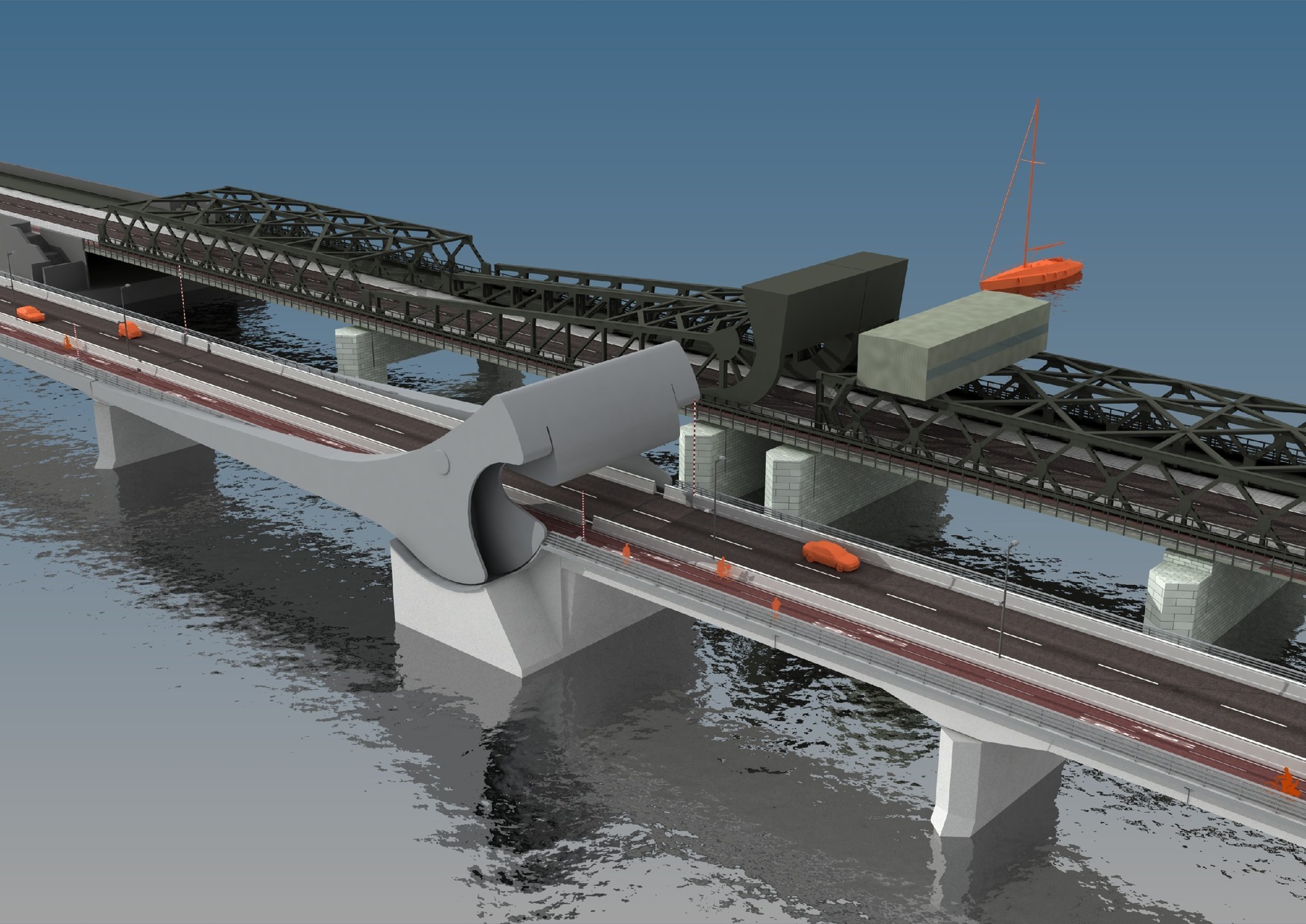
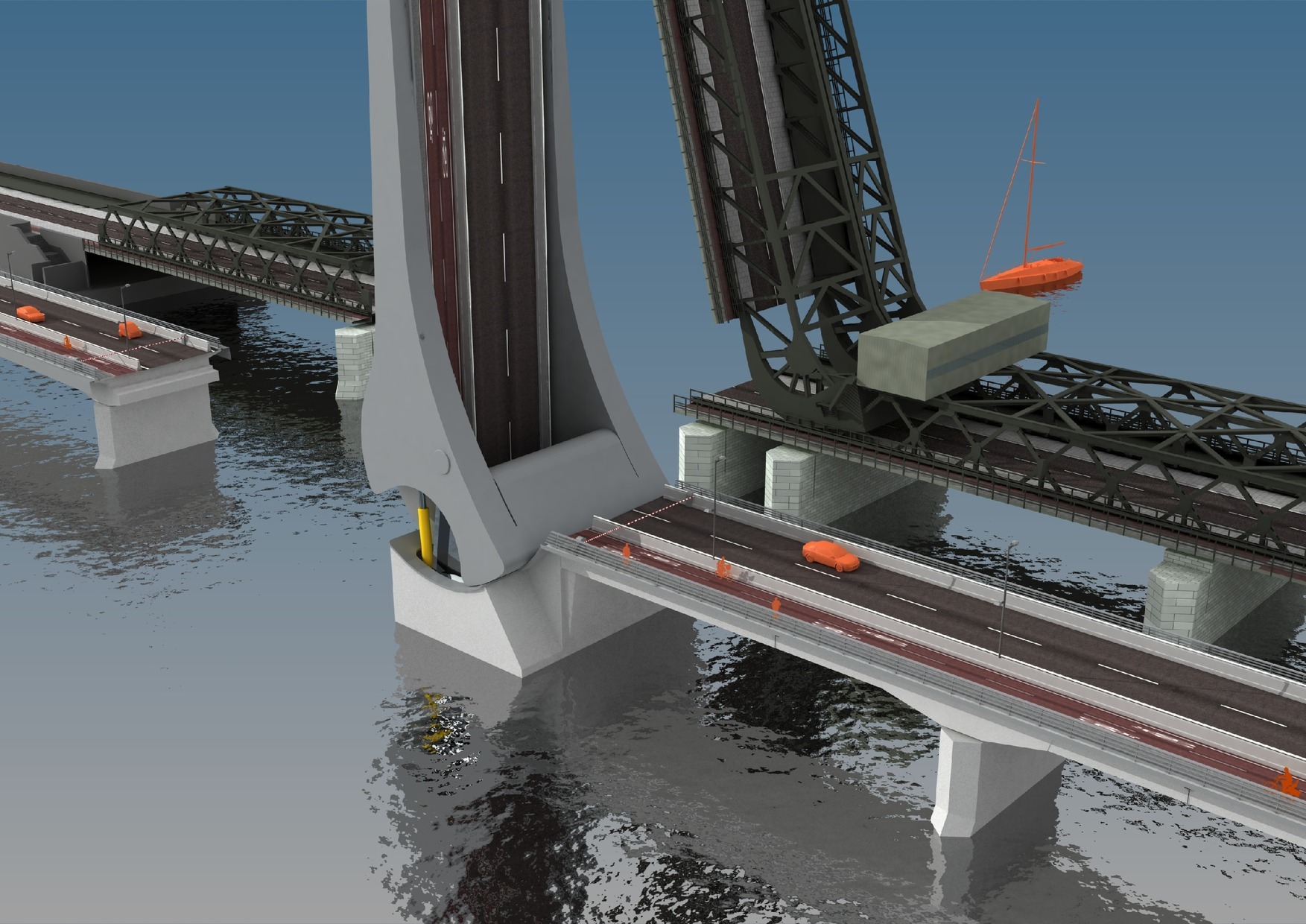
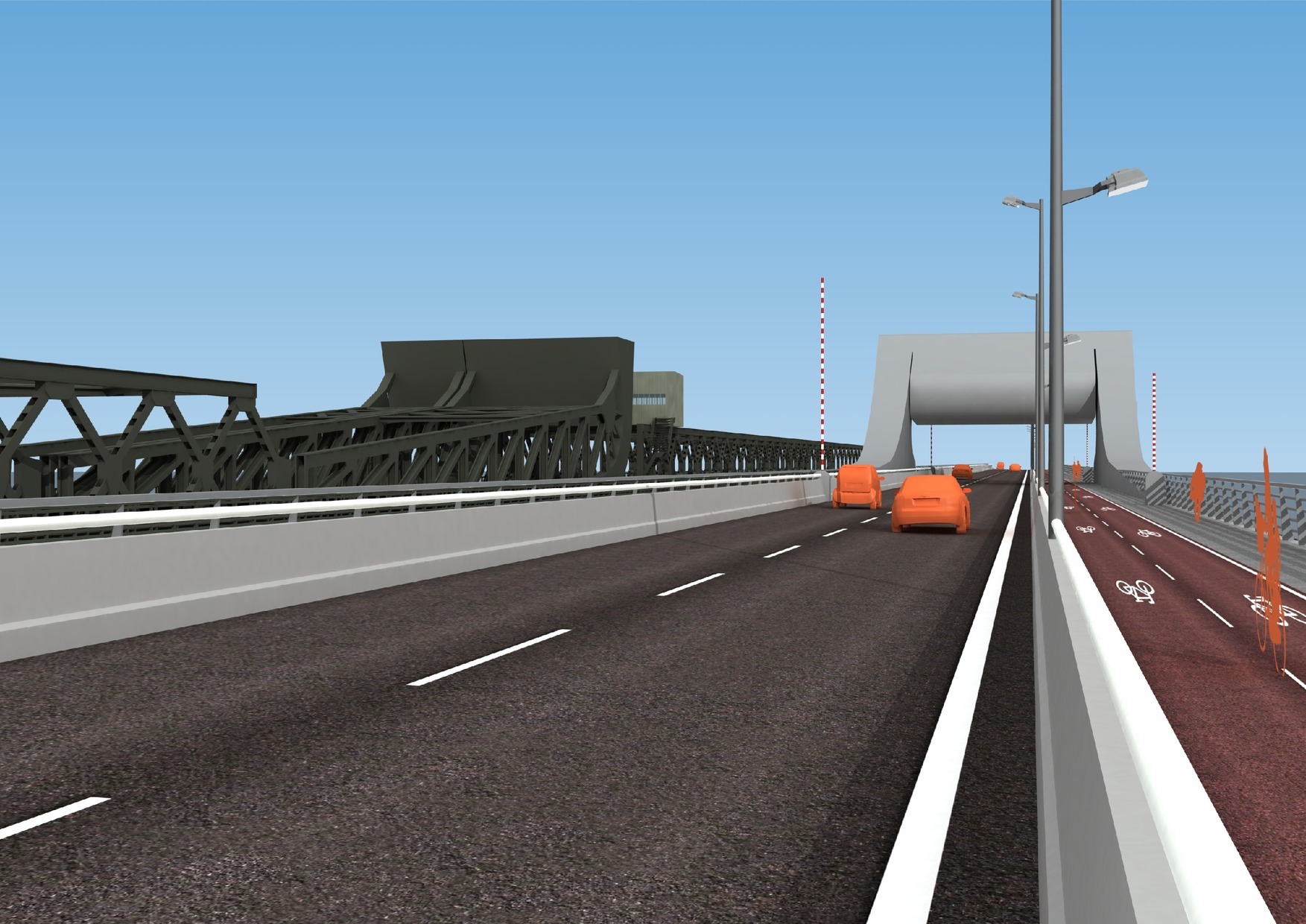
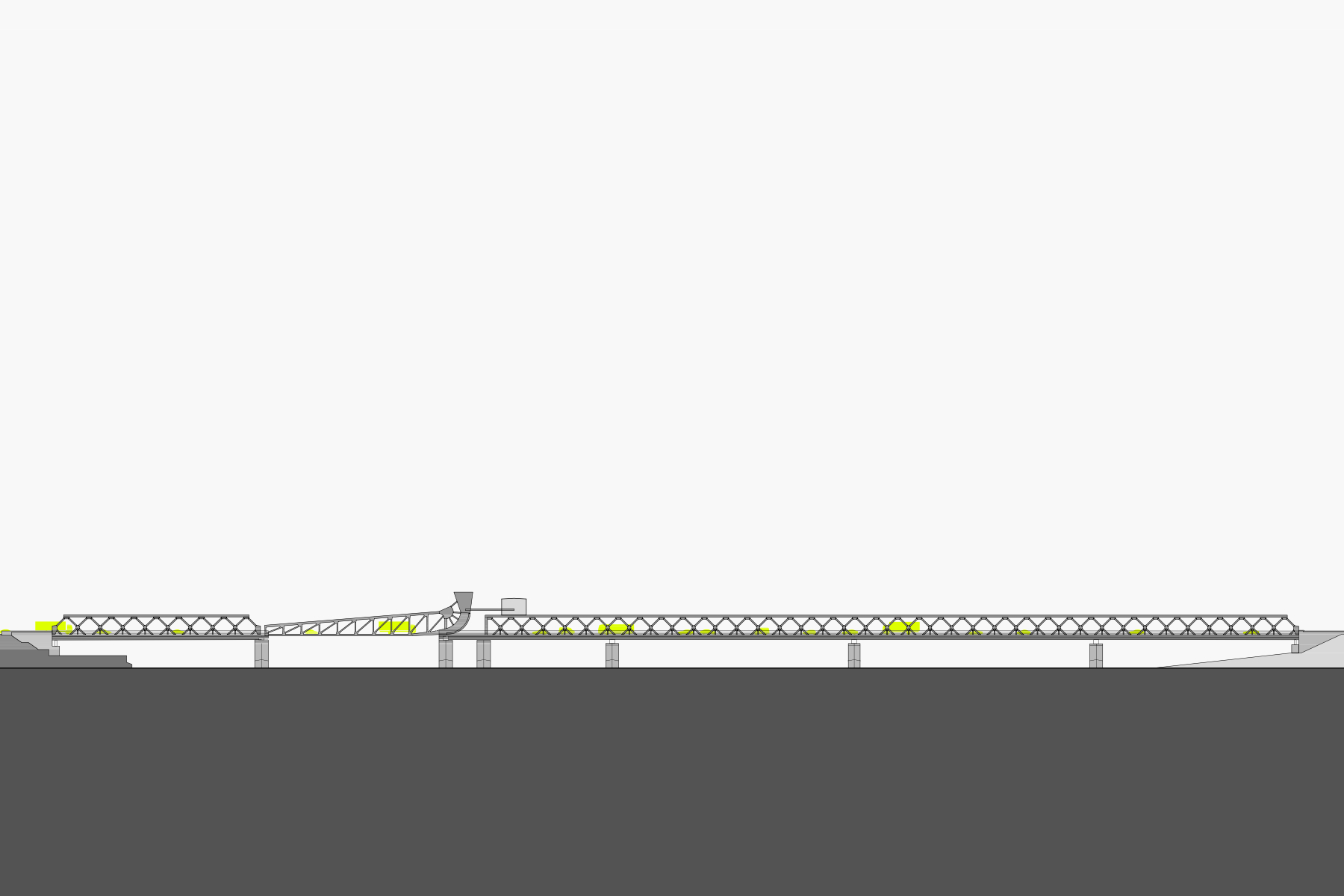
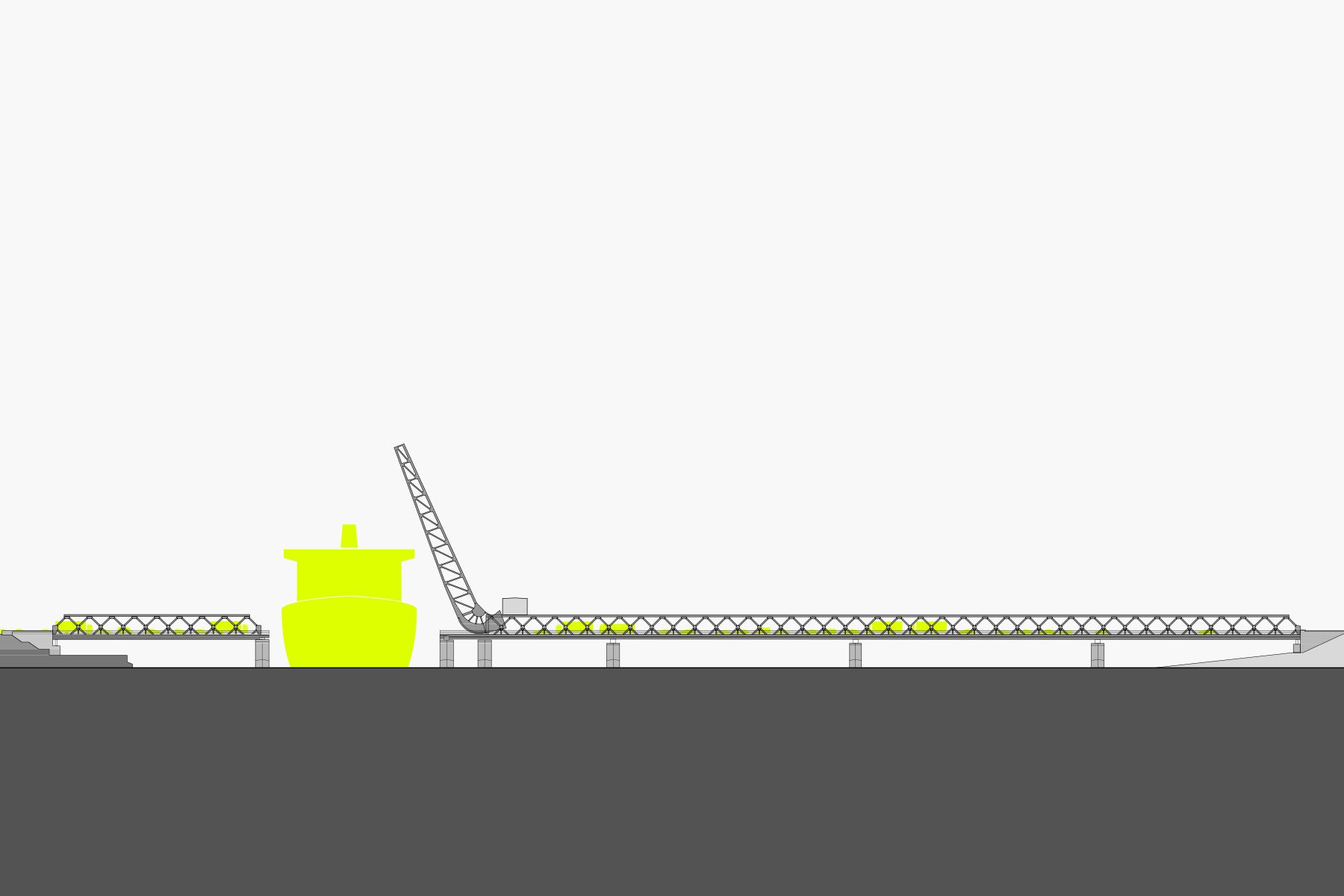
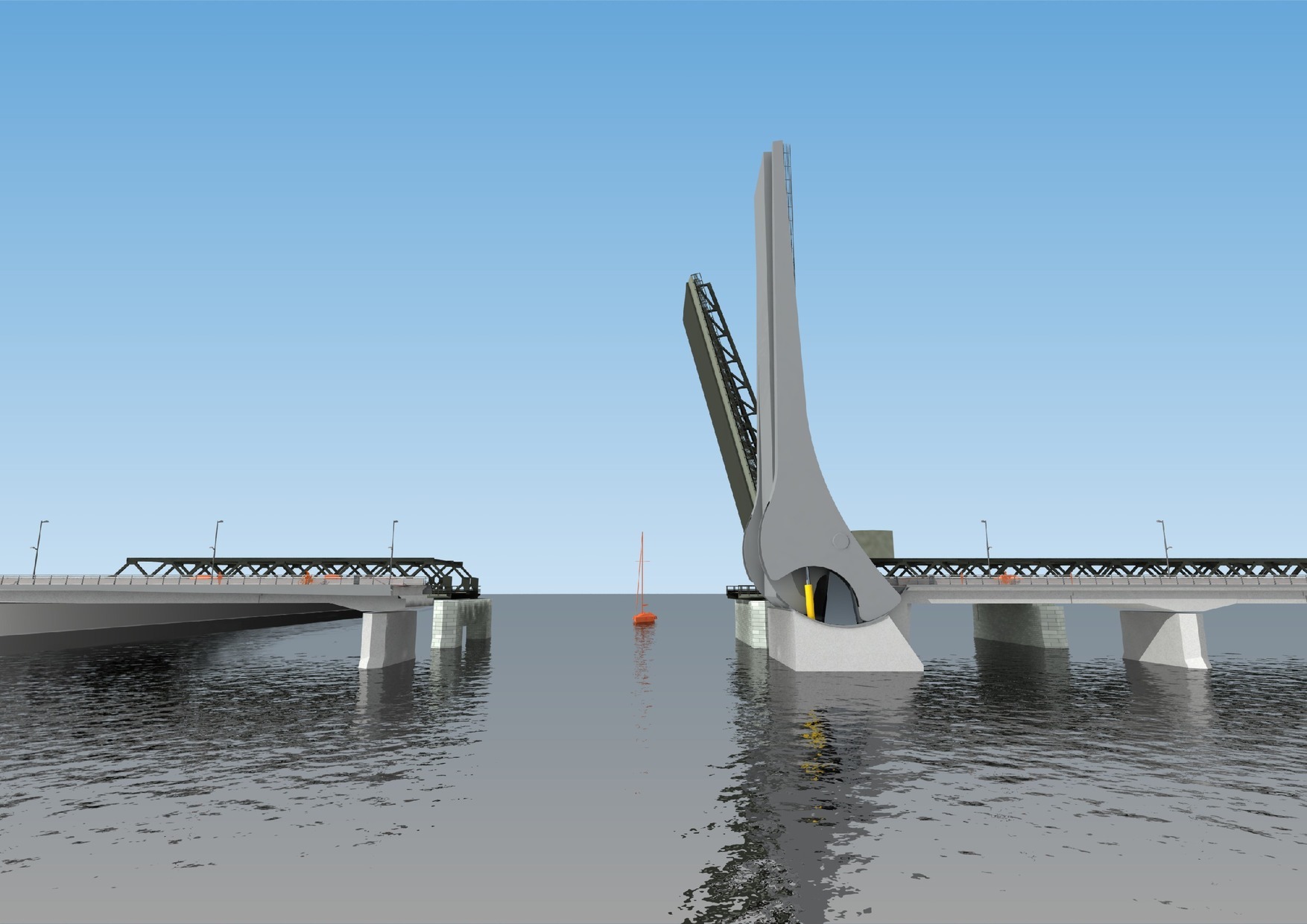
—
